Country
Crash of a De Havilland DHC-3 Otter near Alliford Bay: 3 killed
Date & Time:
Aug 18, 1996 at 1950 LT
Registration:
C-GCMY
Survivors:
No
Schedule:
Tasu - Alliford Bay
MSN:
22
YOM:
1953
Crew on board:
1
Crew fatalities:
Pax on board:
2
Pax fatalities:
Other fatalities:
Total fatalities:
3
Circumstances:
The float-equipped, turbine-engine, DHC-3 Otter departed from Tasu, British Columbia, at about 1940 Pacific daylight saving time (PDT), with the pilot and two passengers on board, on a charter, visual flight rules (VFR) flight to Alliford Bay, 26 nautical miles to the north. When the aircraft did not arrive at destination, the operator initiated a search. The aircraft wreckage was located the following day, 18 nautical miles (nm) south of Alliford Bay, in rugged terrain at an elevation of 1,700 feet above sea level (asl). The aircraft was destroyed, and there were no survivors.
Probable cause:
The pilot probably made a navigational error because of restricted visibility in fog and light drizzle and entered the wrong valley, and he delayed his decision to reverse course until he was unable to avoid the weather.
Final Report:
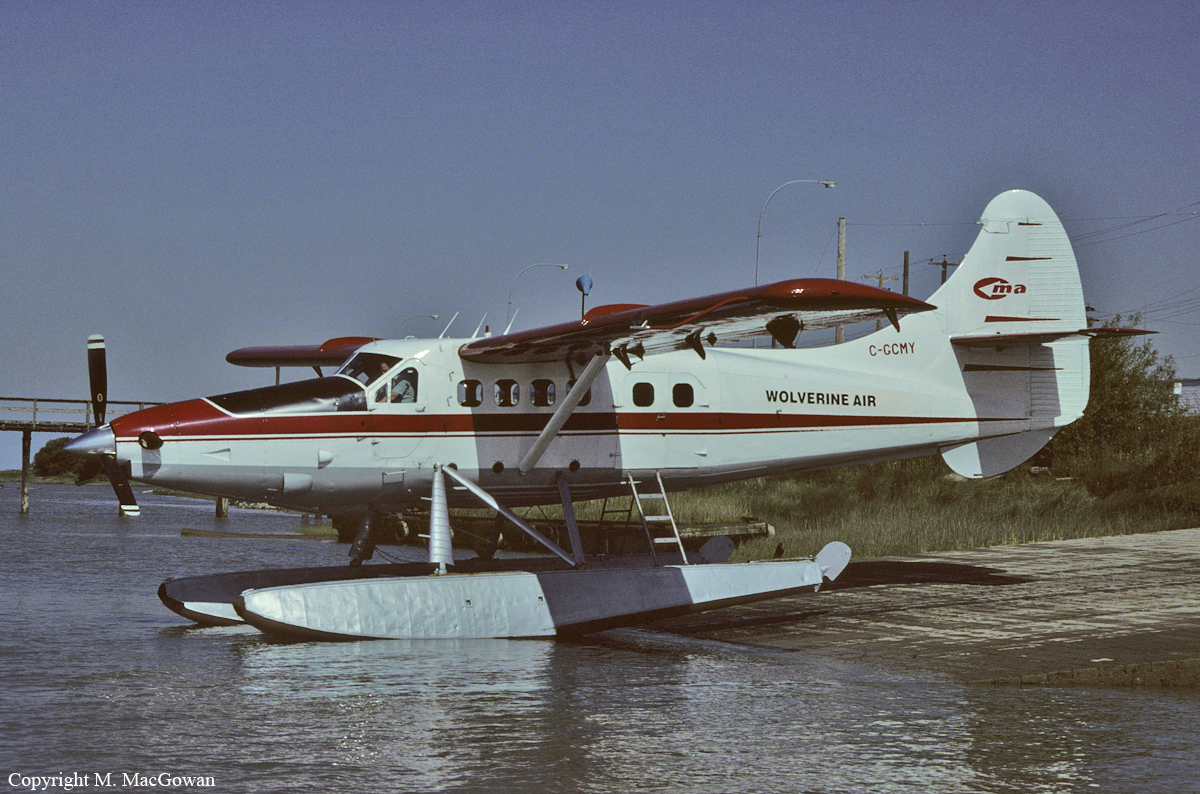
Crash of a De Havilland DHC-3 Otter near Cochenour
Date & Time:
Jun 16, 1996 at 1914 LT
Registration:
C-FMEL
Survivors:
Yes
Schedule:
Cochenour - Thunder Bay
MSN:
222
YOM:
1957
Crew on board:
1
Crew fatalities:
Pax on board:
6
Pax fatalities:
Other fatalities:
Total fatalities:
0
Circumstances:
The float-equipped DHC-3 (Otter), carrying the pilot and six passengers, departed the company's water base at Cochenour, Ontario, on a charter flight to Sandy Beach Lodge, located on Trout Lake approximately 25 miles to the east. The pilot levelled the aircraft and configured it for cruise flight at approximately 2,500 feet above sea level (asl). Shortly after level-off, the pilot heard a popping sound and noted a slight loss of engine power, and wisps of whitish-grey smoke entered the cabin. The aircraft instruments indicated normal engine operation, and the fire warning system did not activate. The pilot suspected that the engine had suffered a cylinder failure and turned to return to Cochenour. A passenger seated in the right front crew seat reported flames near the floor at the front, right corner of the cockpit. The pilot radioed the Thunder Bay Flight Service Station to advise of the emergency, had the passenger vacate the crew seat, and attempted to suppress the fire with a hand-held extinguisher. Thick, black smoke billowed into the cabin, restricting visibility and causing respiratory distress for all of the occupants. The pilot opened the left crew door in order to see ahead and landed the aircraft, still on fire, on McNeely Bay, the first available landing site. The aircraft landed hard but remained upright on the floats. The occupants left by the main door, with their life jackets, and were picked up almost immediately by nearby boats. The aircraft was consumed by fire within minutes after landing. The pilot suffered second degree burns to his face and right forearm, and the passenger in the right crew seat suffered burns to his right leg. The remaining five passengers escaped serious injury.
Probable cause:
Continued operation of the engine following an exhaust valve failure on the n°2 cylinder resulted in a flaming gas path near the right side of the firewall, an exhaust system overheat, and a subsequent cabin fire.
Final Report:
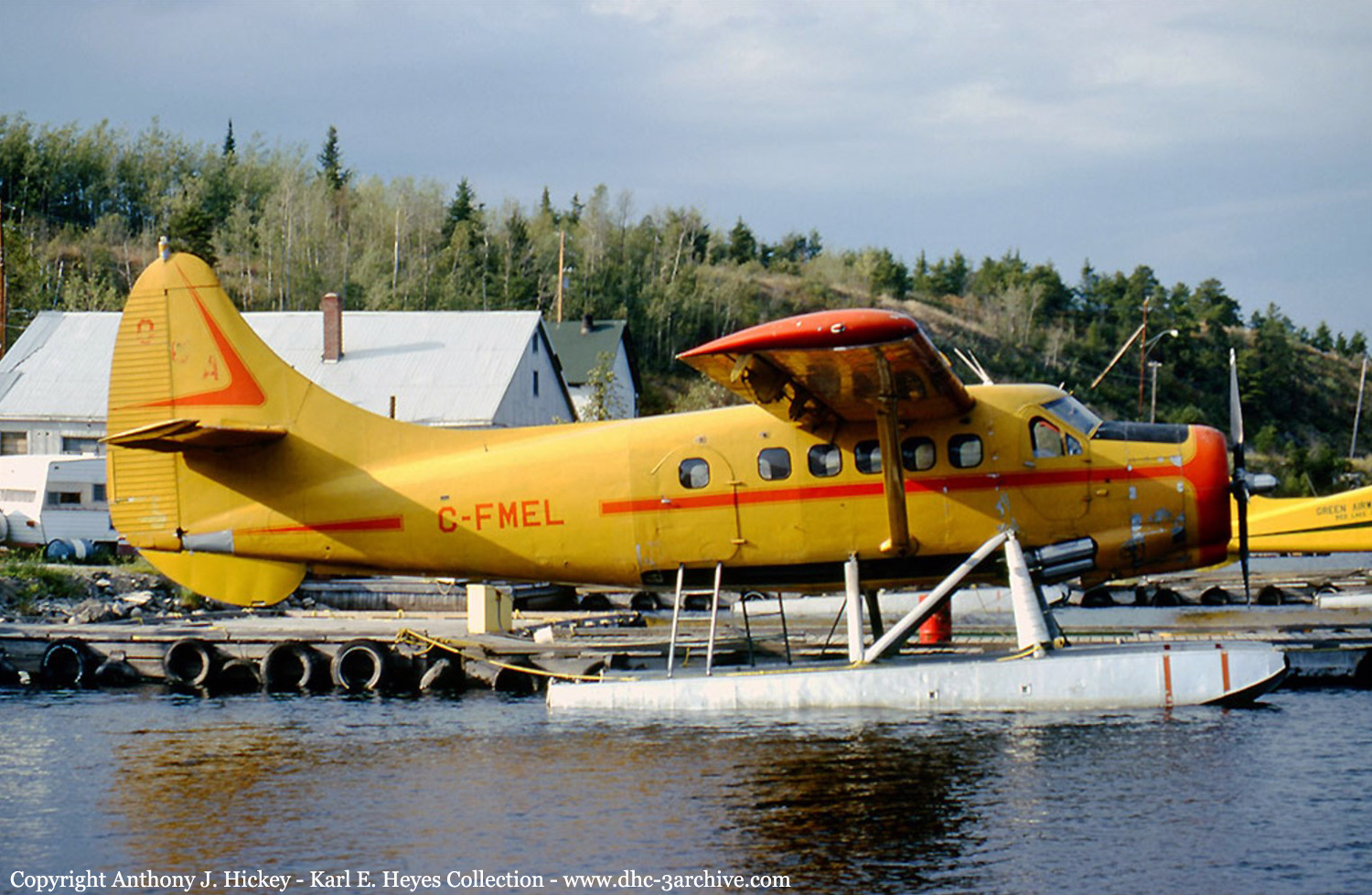
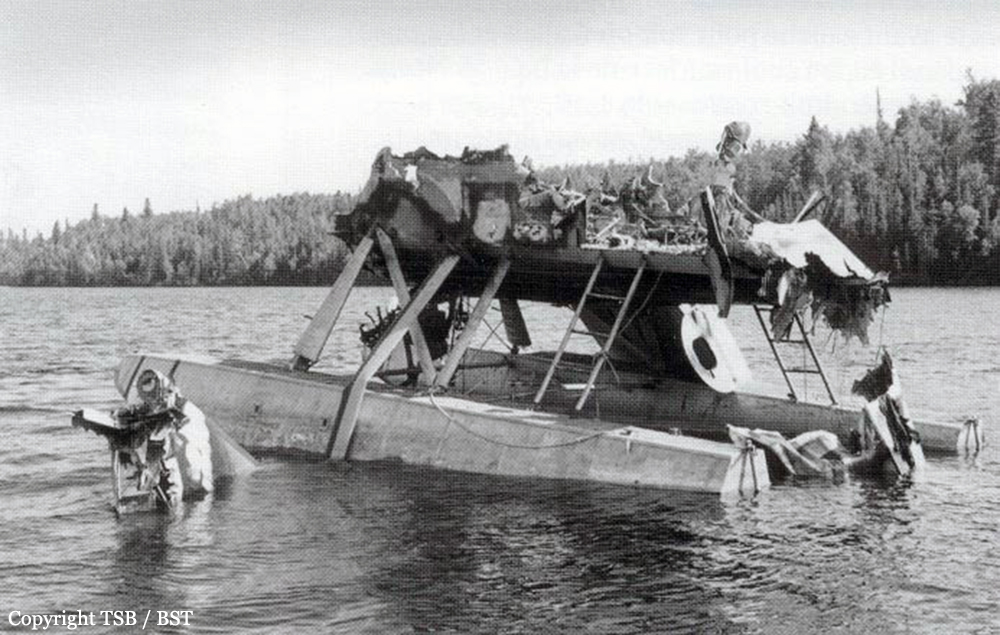
Crash of a De Havilland DHC-3 Otter near Terrace: 2 killed
Date & Time:
May 9, 1996 at 1430 LT
Registration:
C-GDOB
Survivors:
No
Schedule:
Ketchikan – Prince Rupert – Dawson Creek – Buffalo Narrows
MSN:
194
YOM:
1957
Crew on board:
2
Crew fatalities:
Pax on board:
0
Pax fatalities:
Other fatalities:
Total fatalities:
2
Circumstances:
The single-engine, float-equipped DHC-3 Otter departed Ketchikan, Alaska, at 0905 Pacific daylight time (PDT) on 09 May 1996 with a pilot and co-pilot on board. They were on a visual flight rules (VFR) ferry flight to Dawson Creek, British Columbia, en route to Buffalo Narrows, Saskatchewan. After a refuelling stop and weather briefing at Prince Rupert, British Columbia, the aircraft departed eastbound along the published Telkwa Pass VFR route. When the aircraft did not arrive at Dawson Creek, it was reported overdue. The next day, an extensive search for the missing Otter was commenced and wreckage was located by search and rescue aircraft at 1930 PDT, 30 miles east of Terrace, in the Telkwa Pass. The aircraft had struck mountainous terrain and was destroyed. Both occupants were fatally injured.
Probable cause:
The absence of aircraft wreckage and documentation precludes an analysis of the technical aspects of this accident. This analysis, therefore, concentrates solely on the operational aspects. The high impact speed is indicative of either a loss of control followed by a rapid descent into terrain or controlled flight into unseen terrain. Given that the pilot reported encountering snow showers within 15 miles of the accident site, it is possible that the weather continued to deteriorate and may have adversely affected the pilot's ability to maintain visual contact with the terrain.
Findings:
1. The weight and centre of gravity of the aircraft at the last take-off were estimated to have been within the prescribed limits.
2. The pilot was certified, trained, and qualified for the flight in accordance with existing regulations.
3. Marginal visual weather conditions existed in the vicinity of the accident site.
4. It is possible that deteriorating weather affected the pilot's ability to maintain visual contact with the terrain.
Causes and Contributing Factors:
It was not determined why the aircraft struck terrain; however, it is likely that the contact occurred during conditions of reduced visibility.
Findings:
1. The weight and centre of gravity of the aircraft at the last take-off were estimated to have been within the prescribed limits.
2. The pilot was certified, trained, and qualified for the flight in accordance with existing regulations.
3. Marginal visual weather conditions existed in the vicinity of the accident site.
4. It is possible that deteriorating weather affected the pilot's ability to maintain visual contact with the terrain.
Causes and Contributing Factors:
It was not determined why the aircraft struck terrain; however, it is likely that the contact occurred during conditions of reduced visibility.
Final Report:
Crash of a De Havilland DHC-3 Otter in Campbell River: 8 killed
Date & Time:
Sep 27, 1995 at 1910 LT
Registration:
C-FEBX
Survivors:
Yes
Schedule:
Triumph Bay – Campbell River
MSN:
38
YOM:
1954
Crew on board:
1
Crew fatalities:
Pax on board:
9
Pax fatalities:
Other fatalities:
Total fatalities:
8
Captain / Total hours on type:
1251.00
Aircraft flight hours:
16428
Circumstances:
The single-engine turbine Otter on amphibious floats departed Triumph Bay, British Columbia, at 1634 Pacific daylight saving time (PDT) with one pilot and nine passengers on board for a visual flight rules (VFR) flight to Campbell River. At 19:01:59 the pilot called Campbell River Flight Service Station (FSS) and reported that he was seven nautical miles (nm) northwest of the airport, inbound for Campbell River. Radar data from Comox indicate that, when this call was made, the aircraft was actually 11 nm northwest of Campbell River, just south of the Narrows (see map, Appendix A). At 19:02:40, the pilot was given the 1900 PDT Campbell River weather observation, which was as follows: ceiling 300 feet overcast and visibility two miles in light rain and fog. The pilot requested a special VFR (SVFR) clearance to enter the Campbell River control zone. Clearance for SVFR was delayed by Comox air traffic control (ATC) until an instrument flight rules (IFR) aircraft on approach to Campbell River had landed. At 19:03:54, the IFR aircraft reported breaking clouds at 900 feet above sea level (asl), which would be approximately 550 feet above ground level, on the ILS approach to runway 11 at Campbell River (airport elevation is 346 feet). This information was acknowledged by the turbine Otter pilot. The IFR aircraft landed at 1904, and the turbine Otter was issued an SVFR clearance at 19:04:45. Radar data indicate that, at that time, the aircraft was about one mile northwest of Tyee Spit, a frequently used, alternate landing site (water) for company aircraft when weather conditions preclude landing at Campbell River airport. Radar data indicate that, at 1906, after passing by Tyee Spit, the aircraft turned southbound and flew directly toward the airport. At about 2 1/2 miles from the airport, at 19:07:40, the aircraft turned right to a heading of approximately 310/ magnetic and flew in that general direction for about two minutes. The aircraft was on a track that was approximately parallel to the extended runway centre line, tracking outbound from the airport with the localizer and the Campbell River (YBL) non-directional beacon (NDB) to the left. The aircraft passed abeam the YBL NDB, which serves as the final approach fix (FAF) for the ILS approach to runway 11, and continued outbound. At 19:09:40, at about three miles outside the beacon, the aircraft turned left to a southerly heading toward the localizer and the YBL NDB. At 19:10:08, the pilot radioed that he was seven miles northwest; this was the last transmission received from the aircraft. At 19:10:25, radar contact was lost. The aircraft crashed into the northwest side of a 1,047-foot mountain at about the 860-foot level, in straight-and-level flight on a heading of 183/ magnetic. The pilot and seven of the passengers received fatal injuries. The two remaining passengers received serious injuries. The accident occurred at 1910 PDT during the hours of official daylight, at latitude 50/01'N, longitude 125/22'W. Official sunset in Campbell River was at 1908, and night was at 1940 PDT.
Probable cause:
The pilot progressively lost situational awareness while attempting to navigate in conditions of low visibility or in cloud and was unaware of the rapidly rising terrain in his flight path. Contributing to this accident were the existing visual flight regulations and the prevailing industry attitudes and practices which did not provide adequate safety margins. Contributing to the severity of the injuries was the detachment of the passenger seats at impact.
Final Report:

Crash of a De Havilland DHC-3 Otter in Salvesen Lake: 6 killed
Date & Time:
Sep 20, 1995 at 1500 LT
Registration:
C-FGCV
Survivors:
No
Schedule:
Stewart Lake - Salvesen Lake
MSN:
2
YOM:
1952
Crew on board:
1
Crew fatalities:
Pax on board:
5
Pax fatalities:
Other fatalities:
Total fatalities:
6
Circumstances:
The single engine aircraft departed Stewart Lake, some 60 miles west of Dryden, on a charter flight to Salvesen Lake, carrying five anglers to a fishing camp. Upon landing on Salvesen Lake, the aircraft flipped over and became submerged. All six occupants were killed. It was reported that the landing was completed with a relative strong tailwind.

Crash of a De Havilland DHC-3 Otter off Taku Lodge: 7 killed
Date & Time:
Jun 23, 1994 at 2015 LT
Registration:
N13GA
Survivors:
Yes
Schedule:
Taku Lodge - Juneau
MSN:
179
YOM:
1956
Crew on board:
1
Crew fatalities:
Pax on board:
10
Pax fatalities:
Other fatalities:
Total fatalities:
7
Captain / Total hours on type:
400.00
Aircraft flight hours:
7672
Circumstances:
Five aircraft departed a lodge, one behind the other. Fog and drizzle were encountered, and the pilot of the first aircraft radioed to the pilots of the other aircraft to cross the river to the east shoreline. A passenger in the fourth aircraft (N13GA) stated that when the aircraft was over the middle of the river, she could not see either shore due to fog. The pilot of N13GA (a floatplane) stated that he encountered deteriorating weather and started a descent, intending to make a precautionary landing. He began to level, expecting conditions to improve. Subsequently, the floatplane hit the surface of 'glassy water' and crashed. Seven passengers were killed and four other occupants were seriously injured. The aircraft was destroyed.
Probable cause:
VFR flight by the pilot into instrument meteorological conditions (IMC), and his failure to maintain altitude (clearance) above the surface of the river. Factors related to the accident were: the adverse weather conditions, and the surface condition of the river (glassy water).
Final Report:
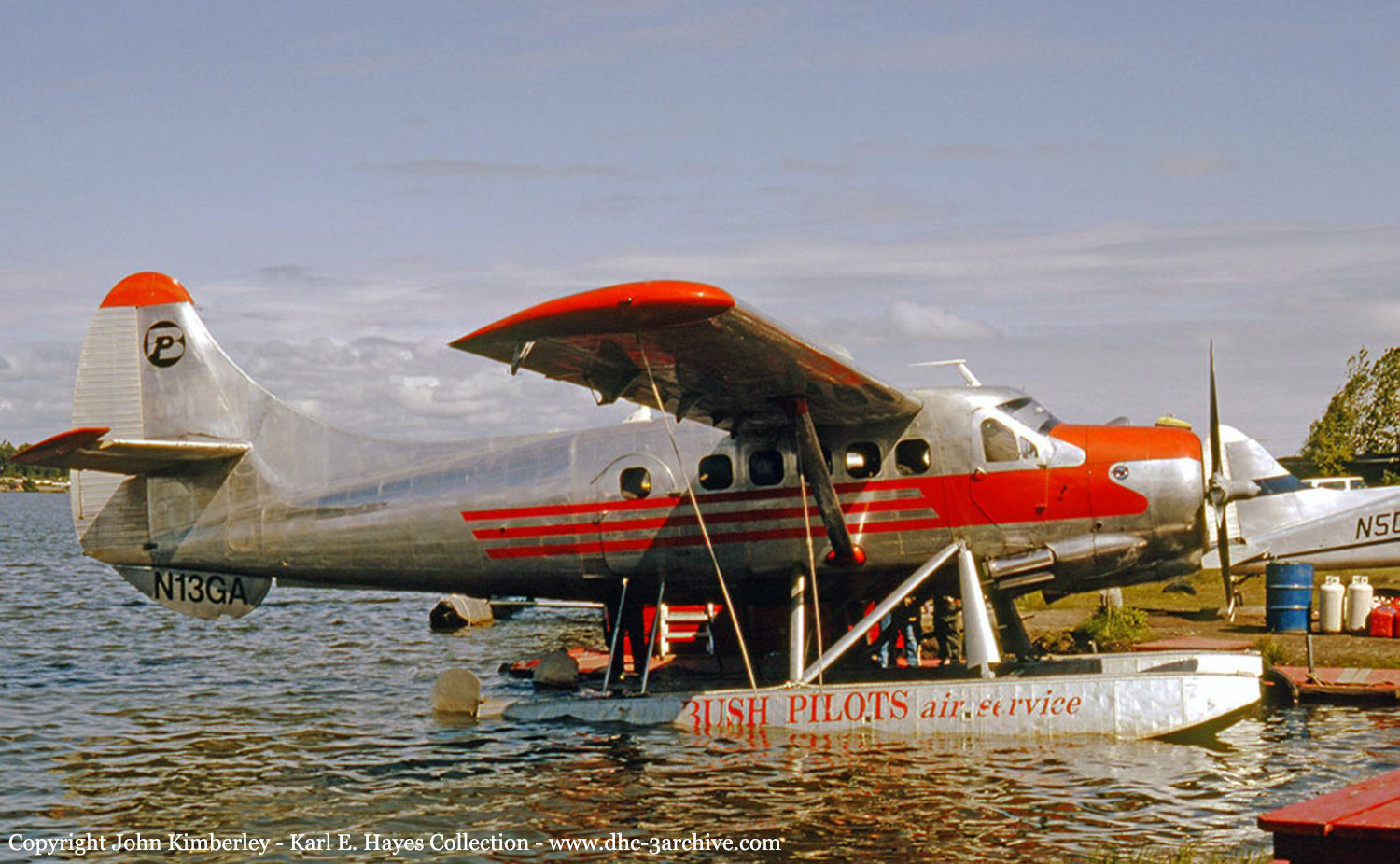
Crash of a De Havilland DHC-3 Otter off Thorne Bay
Date & Time:
Nov 10, 1993
Registration:
N98AT
Survivors:
Yes
Schedule:
Thorne Bay - Ketchikan
MSN:
181
YOM:
1956
Crew on board:
1
Crew fatalities:
Pax on board:
2
Pax fatalities:
Other fatalities:
Total fatalities:
0
Circumstances:
The single engine airplane was returning to its base in Ketchikan following maintenance in Thorne Bay. Shortly after takeoff, while climbing, the engine lost power, forcing the pilot to attempt an emergency landing. While landing on water, a control wire snapped, causing the airplane to nose down in the water, coming to rest upside down. All three occupants were rescued by coastguard 20 minutes later and the aircraft sank.
Probable cause:
Loss of engine power on climb out for unknown reasons.
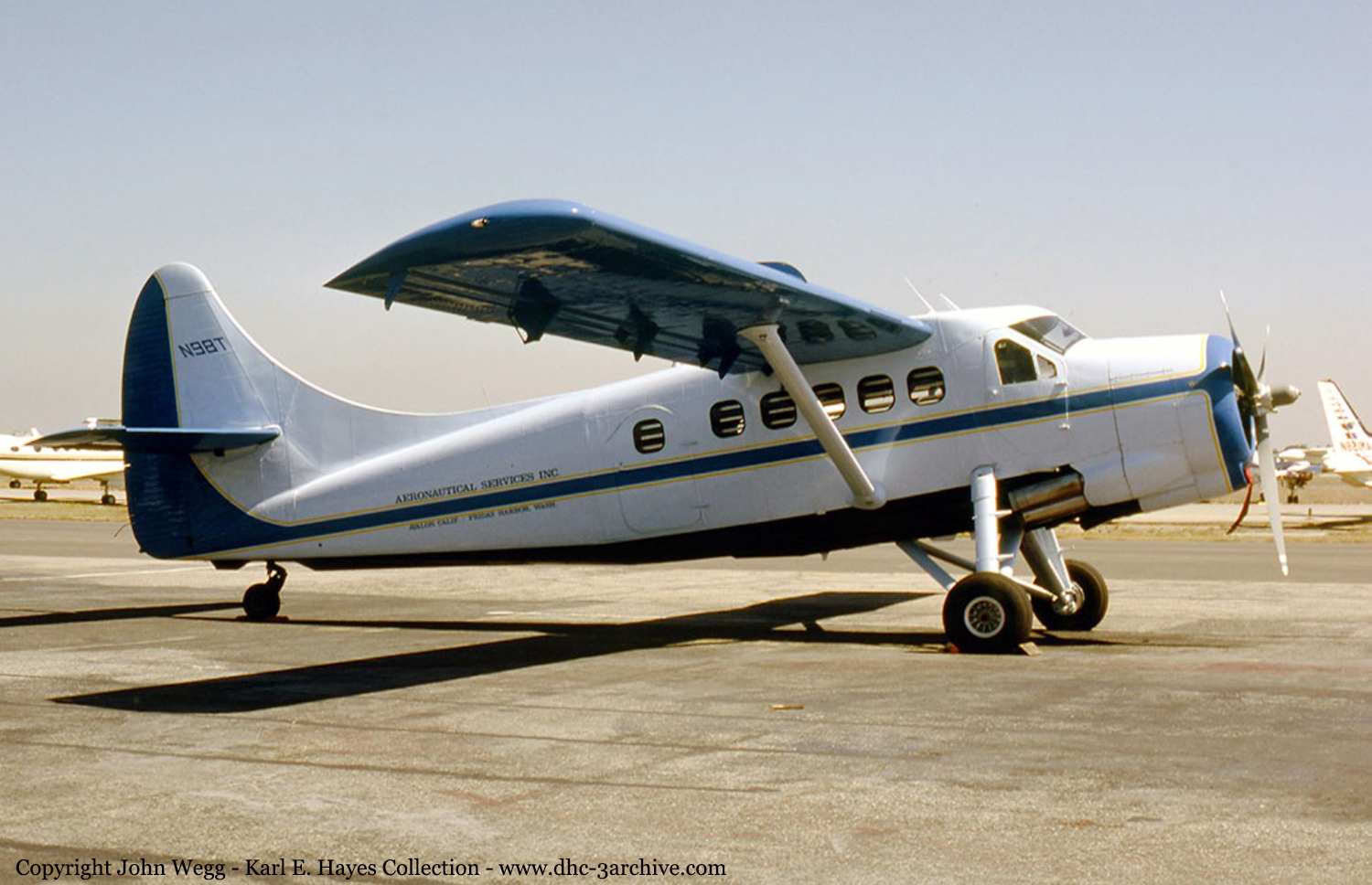
Crash of a De Havilland DHC-3 Otter in Nikabuna Lake
Date & Time:
Aug 19, 1993 at 1522 LT
Registration:
N321KA
Survivors:
Yes
Schedule:
Nikabuna Lake - Anchorage
MSN:
415
YOM:
1962
Crew on board:
1
Crew fatalities:
Pax on board:
5
Pax fatalities:
Other fatalities:
Total fatalities:
0
Captain / Total hours on type:
350.00
Aircraft flight hours:
7200
Circumstances:
The on-demand fishing/hunting charter air carrier pilot experienced a total loss of power and landed in a small lake. During the ground run following the emergency landing a oil-fed fire destroyed the aircraft. Investigators found inadequate flight following documentation, and fuel records or maintenance records for accident acft or operation. Passenger witnesses reported low fuel gauges prior to takeoff. Fuel pump examination indicated fuel starvation.
Probable cause:
Fluid, fuel starvation as a result of the pilot-in-command's improper inflight planning/decision. A factor in the accident was the operator's inadequate flight time and fuel upload record keeping.
Final Report:
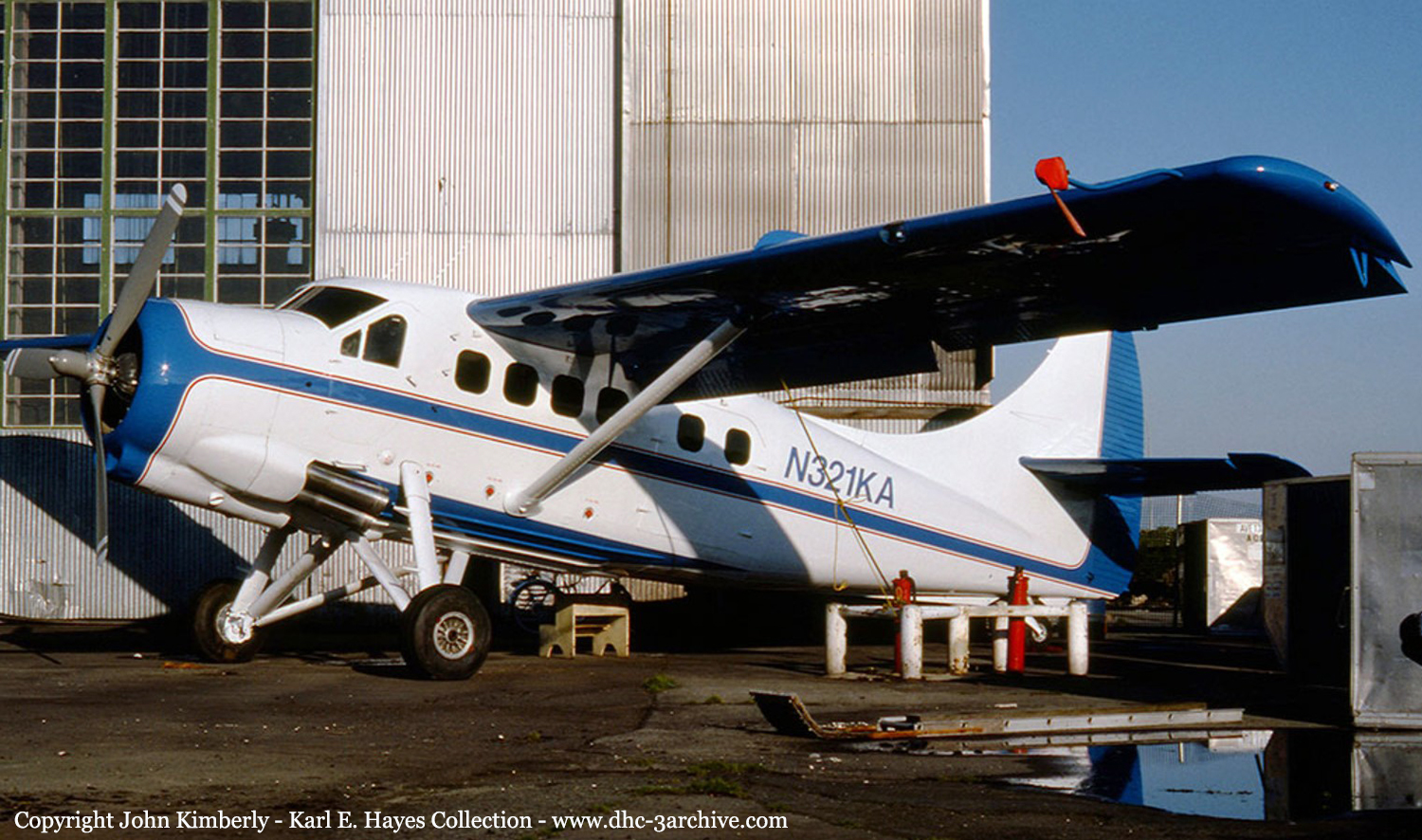
Crash of a De Havilland DHC-3 Otter in Villeneuve: 2 killed
Date & Time:
May 22, 1993 at 0922 LT
Registration:
C-GKPB
Survivors:
Yes
Schedule:
Villeneuve - Villeneuve
MSN:
274
YOM:
1958
Crew on board:
2
Crew fatalities:
Pax on board:
1
Pax fatalities:
Other fatalities:
Total fatalities:
2
Circumstances:
The single engine aircraft was engaged in a post maintenance test flight, carrying one engineer and two pilots. Shortly after takeoff from Villeneuve Airport, while in initial climb, the aircraft started to pitch up and down then lost height and crashed. The passenger was seriously injured while both pilots were killed, among them Billy Bourque, owner of Loon Air.
Probable cause:
It was determined that the loss of control was the consequence of an error on part of the ground personnel in charge of the maintenance as the controls to the left aileron had been mis-rigged.




